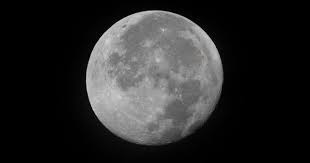When Can You Expect July’s Full Moon To Reach Its Peak?
8th Jul 2022
July’s full moon has been called the “Thunder Moon” because of the prevalence of thunderstorms throughout the summer months. This is expected to reach its peak next week, on 13th July, at 7.37 pm.

Although it will technically only last in full form for an instant, to the naked eye a supermoon can appear full for around three days.
In June, the Strawberry Moon occurred, and it remained clear for a few nights afterwards.
How often is there a full moon?
A full moon takes place every 29.5 days, and it occurs when the Sun’s rays completely illuminated the Moon. At this point, the Earth is aligned directly between the Moon and the Sun.
While most years will have 12 full moons, there are some years that have 13 full moons. When this happens, and one month has two full moons, the second full moon is called a Blue Moon. The last time this happened was in October 2020.
What are the remaining full moons of 2022?
The remaining full moons for this year are as follows:
- August: The Sturgeon Moon, which will happen on 12th August.
- September: The Harvest Moon, which will happen on 10th September.
- October: The Hunter’s Moon, which will happen on 9th October.
- November: The Beaver Moon, which will happen on 8th November.
- December: The Cold Moon, which will happen on 8th December.
Why do full moons have different names?
The early Native Americans did not use the months of the Gregorian or Julian calendar to record time. Instead, a nickname was given to each full moon by the tribes so that they could keep track of the lunar months and seasons.
Most of the names are related to an event or activity that happened at the time within each location. Nevertheless, the system was not uniform and tribes tended to count and name moons differently.
Some, for instance, counted five seasons in the year whereas others counted four. Some counted 13 moons and others counted 12.
Colonial Americans adopted a number of the moon names, and they were applied to their own calendar system, which is why they are still used today.

![Not Only Eclipse: Last Week In Best Astrophotos [5-12 April] Not Only Eclipse: Last Week In Best Astrophotos [5-12 April]](https://orbitaltoday.com/wp-content/uploads/2024/04/Veil-Nebula-300x205.jpg)





Thank you for your comment! It will be visible on the site after moderation.